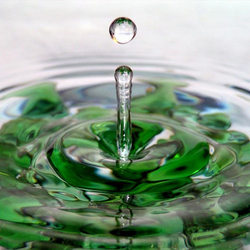
Greentech Lead America: Americans use about 410 billion
gallons of water per day — or more than the daily flow of the entire
Mississippi River — according to the U.S. Geological Survey.
To help generate awareness for water consumption issues
in recognition of Earth Day, KBM, a leading provider of sustainable facility
management solutions, today identified five tips for building owners and
managers to reduce the amount of water used in their buildings.
“Americans often take access to fresh water for
granted, but it’s something that may not always be readily available to
us,” said Rene Tuchscher, chief operating officer, KBM Facility Solutions.
“A building maintenance process like cleaning can
consume a tremendous amount of water if not effectively managed. There are a
few easy steps facility managers can take to substantially reduce water
consumption and improve the overall sustainability of their building
operations,” Tuchscher added.
KBM’s tips for reducing water use include:
1. Reduce your chemical profile. Some cleaning operations
use as many as 25 different cleaning chemicals to clean a building — many of
which end up sitting on the shelf. By reducing this number, less water is used
for chemical dilution requirements.
2. Implement microfiber. Microfiber mops eliminate
approximately 96 percent of bacteria from a surface with 20 times less water
than traditional cotton mops.(1) For example, the University of Texas saved
more than 600,000 gallons of water in one year – enough to fill an
Olympic-sized swimming pool — converting to a microfiber system in conjunction
with a small, two-sided mop bucket.
3. Stop the leaks. While it may not seem like a lot,
droplets of water from leaky faucets can add up. For example, a building with
25 faucets dripping water at a rate of one drip per minute will waste
approximately two gallons of water a day and 867 gallons a year. Regularly
remind cleaning and maintenance staff to tighten faucets to reduce water waste.
4. Evaluate your carpet maintenance program. Restore your
carpet with a high-flow extraction system and maintain the carpet with liquid
soil encapsulation methods. Doing so can substantially reduce the amount water
used in the carpet cleaning process with the same result and can reduce typical
carpet cleaning costs by 60 percent.(2)
5. Implement an ongoing cleaning and preventative
maintenance program. A consistent and ongoing cleaning program helps maintain
the cleanliness of hard surfaces and reduces frequency of substantial deep
cleanings which require extra water use.
Some analysts predict that water will overtake oil as our
scarcest natural resource in the world. By taking action now, facility managers
and building owners can do their part to reduce consumption and ensure fresh
water is available for future generations.
